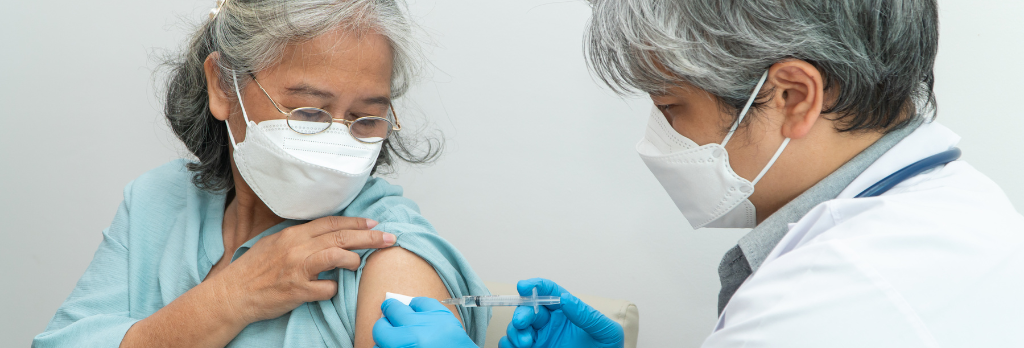Understanding Protein Subunit COVID-19 Vaccines
July 26, 2022The Novavax COVID-19 vaccine is a protein subunit COVID-19 vaccine that is authorized for use in the United States under Emergency Use Authorization. Learn more about Novavax COVID-19 vaccine, including who can get it, doses, and ingredients.
How Protein Subunit COVID-19 Vaccines Work
Protein subunit vaccines contain pieces (proteins) of the virus that causes COVID-19. These virus pieces are the spike protein. The vaccine also contains another ingredient called an adjuvant that helps the immune system respond to that spike protein in the future. Once the immune system knows how to respond to the spike protein, the immune system will be able to respond quickly to the actual virus spike protein and protect you against COVID-19.
- First, protein subunit COVID-19 vaccines are given in the upper arm muscle. After vaccination, nearby cells pick up these proteins.
- Next, our immune system recognizes that these proteins do not belong there. Another ingredient in the vaccine, the adjuvant, helps our immune system to produce antibodies and activate other immune cells to fight off what it thinks is an infection. This is what your body might do if you got sick with COVID-19.
- At the end of the process, our bodies have learned how to help protect against future infection with the virus that causes COVID-19. The benefit is that people get this protection from a vaccine, without ever having to risk the potentially serious consequences of getting sick with COVID-19. Many side effects from getting the vaccine are normal signs the body is building protection.
Facts About Protein Subunit COVID-19 Vaccines
Protein subunit COVID-19 vaccines cannot cause COVID-19 or other illnesses.
- Protein subunit COVID-19 vaccines do not use any live virus.
- Protein subunit COVID-19 vaccines cannot cause infection with the virus that causes COVID-19 or other viruses.
They do not affect or interact with our DNA.
- The protein pieces do not enter the nucleus of the cell where our DNA (genetic material) is located, so they cannot change or influence our genes.
Protein Subunit COVID-19 Vaccines Have Been Rigorously Evaluated for Safety
COVID-19 vaccines are safe and effective.
Protein subunit COVID-19 vaccines have been held to the same rigorous safety and effectiveness standards as all other types of vaccines in the United States. The only COVID-19 vaccines the Food and Drug Administration (FDA) makes available for use in the United States (by approval or emergency use authorization) are those that meet these standards.
Protein Subunit Vaccines Have Been Used for Years
More than 30 years ago, a hepatitis B vaccine became the first protein subunit vaccine to be approved for use in people in the United States. Another example of other protein subunit vaccines used in the United States today include acellular pertussis (whooping cough) vaccines.
To learn more, please visit https://www.cdc.gov/coronavirus/2019-ncov/vaccines/different-vaccines/proteinsubunit.html



